For ‘She Said’ Director Maria Schrader, Making a Movie Was Just Another Way to Get to the Truth
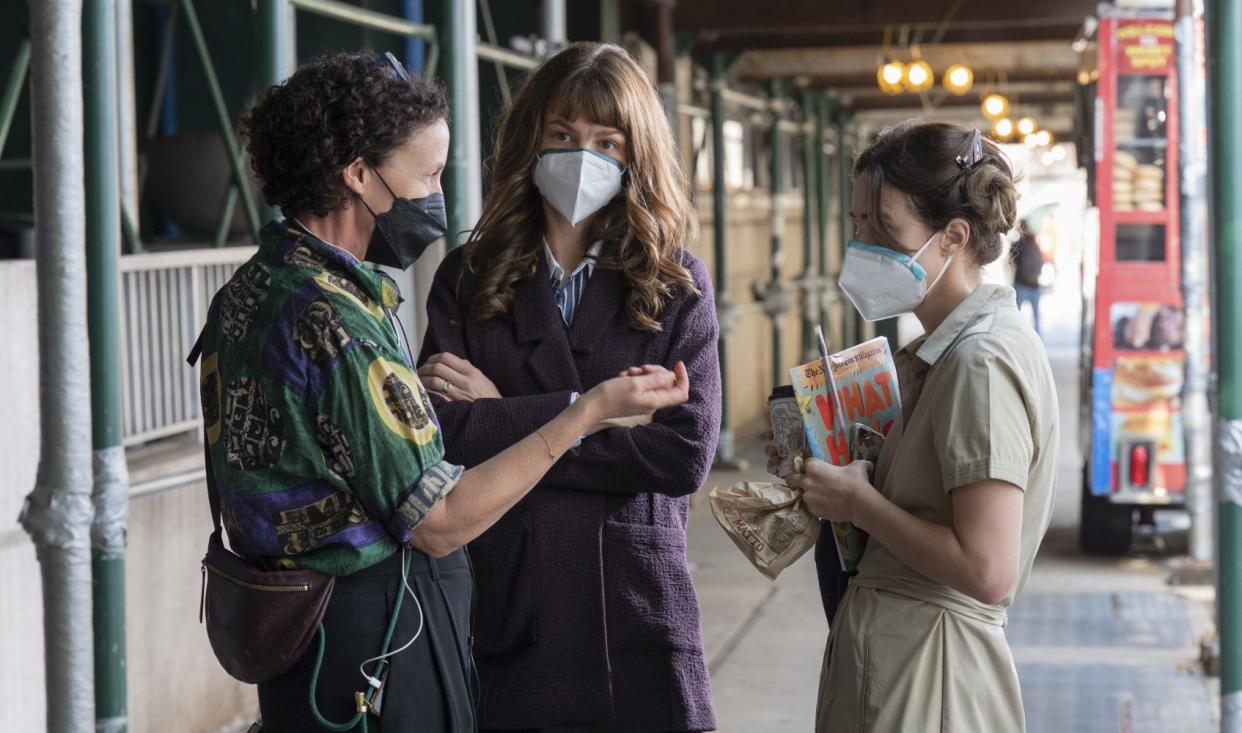
- Oops!Something went wrong.Please try again later.
- Oops!Something went wrong.Please try again later.
- Oops!Something went wrong.Please try again later.
- Oops!Something went wrong.Please try again later.
When journalists Jodi Kantor and Megan Twohey published their first bombshell report on Harvey Weinstein in The New York Times in October 2017, the eventual Pulitzer Prize-winning expose included eight different accusers. Some of them were named (like actress Ashley Judd or former Miramax employee Lauren Madden), while others opted to tell their stories but to remain anonymous.
Navigating the comfort levels of each accuser when it came time to share their stories was key to Kantor and Twohey’s process. Five years later, as the story behind their investigation makes its way to the big screen in the form of Maria Schrader’s incendiary “She Said,” that same care and attention remains front and center.
More from IndieWire
'She Said' Review: A Reckoning Gets the Incendiary and Artful Film It Requires
Crowded Best Actress Race Makes Space for 'Till' and 'She Said'
So does the continued search for the truth. Like the women who inspired her film, the German director’s first English-language feature is rooted in a desire for veracity, done with the kind of thoughtfulness that sets “She Said” a cut above.
As the director explained during a recent interview with IndieWire in New York, it was the production’s general course “to invite people to contribute and to, of course, accept everyone’s individual decision to what extent to contribute or to not contribute at all, or [even just] as a voice.”
It was an idea first pursued by producer Dede Gardner, who worked closely with both Kantor and Twohey (who are played in the film by Zoe Kazan and Carey Mulligan, respectively) even before Schrader came on board, and who approached various survivors to see if they wanted to share their stories in the film and, if so, how much they wanted to contribute.
Some of the women’s real names and stories are used (like Zelda Perkins, who is played by Samantha Morton, and Rowenia Chiu, who is played by Angela Yeoh). Some bold-faced stars are named but never appear (like Rose McGowan, who played a major role in taking down Weinstein but only “appears” via the work of voice actress Keilly McQuail). Gwyneth Paltrow does not physically appear in the film, but the “Shakespeare in Love” Oscar winner contributed her own voice to a pivotal phone call scene.
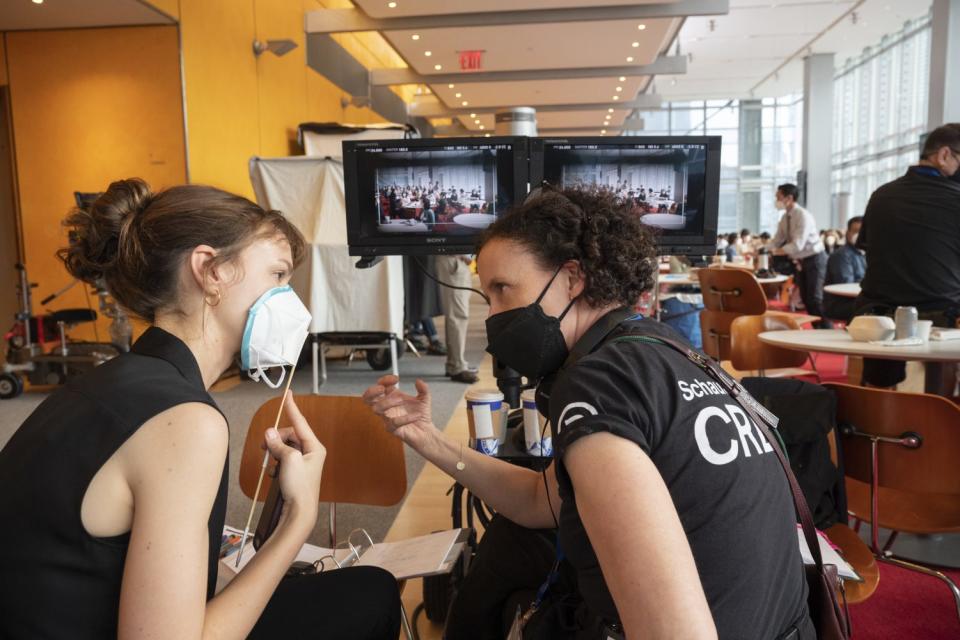
JoJo Whilden/Universal Pictures
And then there’s Ashley Judd, who plays herself in a gobsmacking supporting turn. For Schrader, using the real Judd to play, well, the real Judd added incredible veracity to the film and offered the chance to pull down the fourth wall between audience and production.
“It is so interesting to break this agreement between film and audience,” Schrader said. “And that’s what I told her: ‘If you do this, this is your stage. You are in charge how to perform Ashley Judd.’ It was wonderful. When we premiered here in New York, she told the audience it was an easy decision for her, and she felt it’s validating.”
Like many people in the industry, Schrader said she heard rumors about Weinstein long before the Times report (and Ronan Farrow’s The New Yorker investigation, which soon followed). But there are lots of rumors in Hollywood. Plus, she’d never worked with Weinstein; she hadn’t even met the man! Except, of course, she had.
“Of course, I knew about Harvey Weinstein. I thought, ‘Oh, I’ve never met him,’ but I was corrected by my dear colleague, Juliane Köhler, who said, ‘Of course, you’ve met him, we sat at the bar together’ [at the 2000 Golden Globes],” Schrader recalled. “And I said, ‘No, I don’t remember it. I remember Nick Nolte being very drunk, and I remember meeting Sigourney Weaver in the bathroom, and I remember very well having a cigarette with Courtney Love!”
Weinstein, it seems, didn’t leave much of an impression on Schrader all those years ago. But Twohey and Kantor’s report? That one stuck.
“A day after The New York Times article came out, I read in a German newspaper about it, so the echo immediately came to our country,” she said. “I was wondering if it would have any impact, and then it did. We witnessed it, and then the weeks and the months and the years after. I instantly was involved in so many conversations in the workplace.”
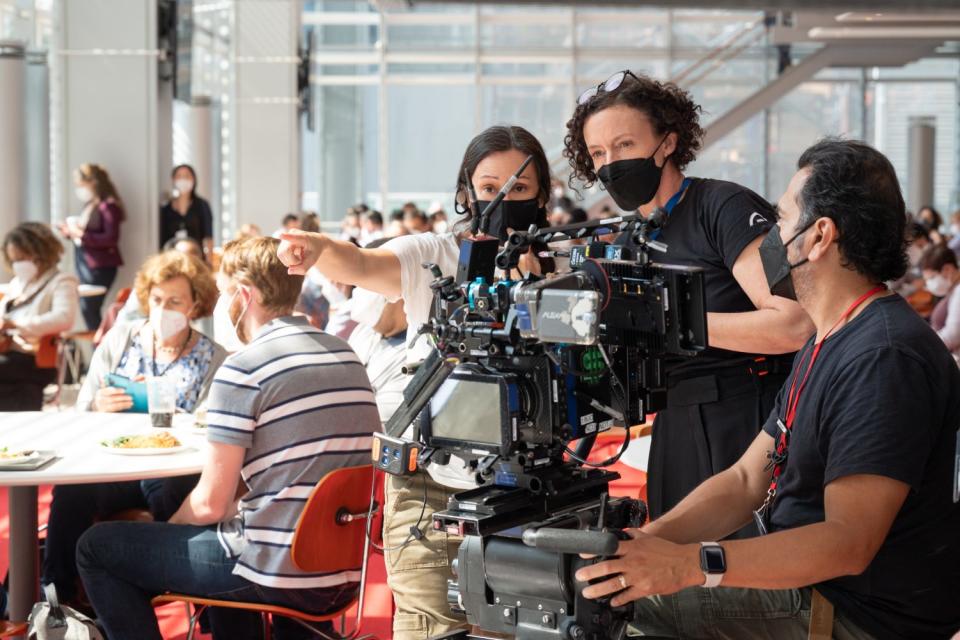
JoJo Whilden/Universal Pictures
In the summer of 2020, just a few weeks after the premiere of her smash hit Netflix series “Unorthodox,” producer Gardner approached Schrader. The pair met on Zoom, chatted about different projects, and left it at that. Schrader was soon off to direct the comedy “I’m Your Man,” which became Germany’s pick for Best International Feature Film at the 2021 Oscars.
By winter, Gardner got a bit more pointed with her chatting, asking Schrader to again pop on a Zoom to talk. “She became a little more specific about what this exactly was,” Schrader said. “She said, ‘We talked. We’ve seen your work. We have decided, if you want this, it’s yours.”
It was a flattering ask for Schrader and also a major break from her typical method of working. The filmmaker has written or co-written all of her other films. She was very active in the writers’ room for “Unorthodox.” But Rebecca Lenkiewicz’s script was already done, deeply researched, massive, and way too good to pass up. (The version Schrader filmed clocked in at over 200 total scenes.)
“It’s very rare to open a script like that and be blown away by that, and that’s what happened to me,” Schrader said. “It’s very complex. It’s bold to include so many topics, to include so many appearances without necessarily explaining everything, and to introduce so many characters. I read it breathlessly, like a thriller, even though, yes, we all know this story and how it ends.”
For Schrader, the script is the thing. As she put it, the words on the page are always “the undeniable best solution for character.” She approaches all scripts, even the ones she’s only directing, with “an actor brain.” Character is paramount to her, and she had incredible resources to make these particular characters work.
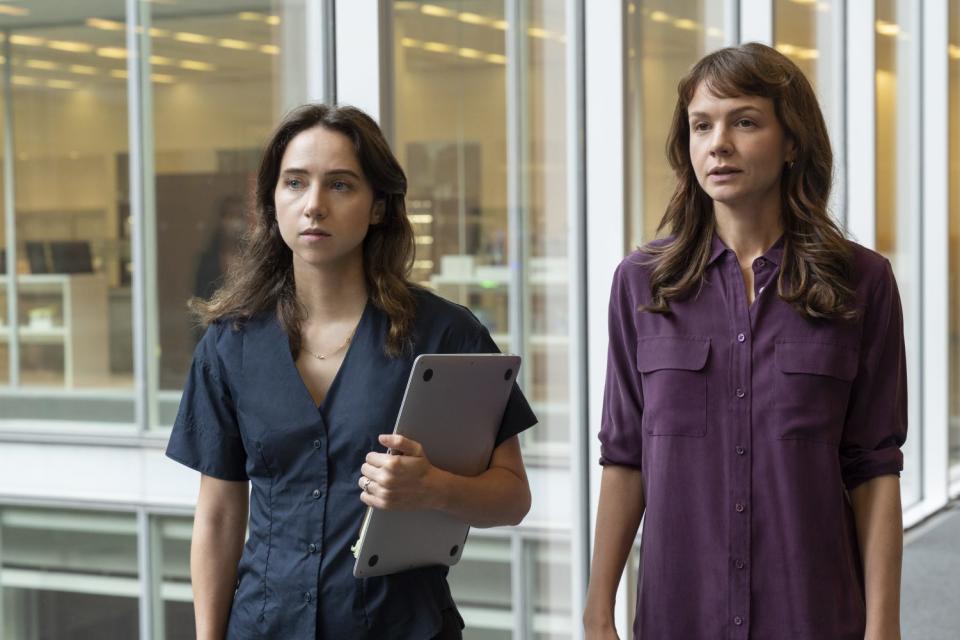
JoJo Whilden/Universal Pictures
Schrader started speaking with Twohey and Kantor as soon as she said yes to Gardner, and the pair — who had already worked closely with Gardner and Lenkiewicz during the scripting stage — remained excellent sources for everyone.
They shared parts of their personal lives that they omitted from their book. They allowed the production into their apartments to get a sense of how they lived and into their closets to see how they dressed. They looked over dialogue. All of it was in service to translating their meticulous journalism to the big screen. Schrader, who obsesses over details and is the kind of creator who says she can’t start even writing a scene until she knows “what the room it takes place in looks like,” loved it.
Soon, actresses Zoe Kazan and Carey Mulligan joined the production, bringing their own kind of truth to the roles. The long-time friends have worked together on a range of projects over the years. They first met in 2008, when they starred together in Ian Rickson’s Broadway revival of “The Seagull” (they even shared a dressing room). Ten years later, Mulligan starred in “Wildlife,” directed by Kazan’s husband, Paul Dano, and co-written by the couple. The bond was deep, but Schrader didn’t know that.
“I didn’t know they had such a relationship,” Schrader said. “I talked to Carey first, and I didn’t share with her that also Zoe is on our list. I knew that they had worked together and there are all these pictures of them together, but then Francine Maisler, our wonderful casting director said, ‘They know each other. They’re friends.’ And I was like, ‘Are you really sure? Because the fact that they work together and have all these pictures does not necessarily mean that they are also really good friends that like each other.'”
But while her eventual stars are indeed friends who love each other, Schrader wasn’t convinced that was necessarily right for the film. And then she saw them together.
“When I saw them together, when I talked to both of them, it was very clear to me,” she said. “They were the ones-and-onlys then. You look for that. You seek that as a director, you need this certainty. You’re looking for so long until, ‘I want to work with this person and with no other person in the world.’ And this was it with Zoe, and this was it with Carey.”
Fortunately, Kazan and Mulligan weren’t just excellent together — they were credible on their own. Schrader wanted nothing less than stars who could nail the smallest details about these real people. She wanted the kind of stars who can credibly type. Those small touches mattered.
“Looking for Megan and Jodi meant we needed the most brilliant individual actors, but also [actors who are able] to team up and to echo that difference of energies within Megan and Jodi,” Schrader said. “On top of all of that, we also needed two actors who were believable intellectuals, who you would not doubt in that kind of environment, with this kind of language. There’s a specific pace of mind. That’s not naturally given with every brilliant actor.”
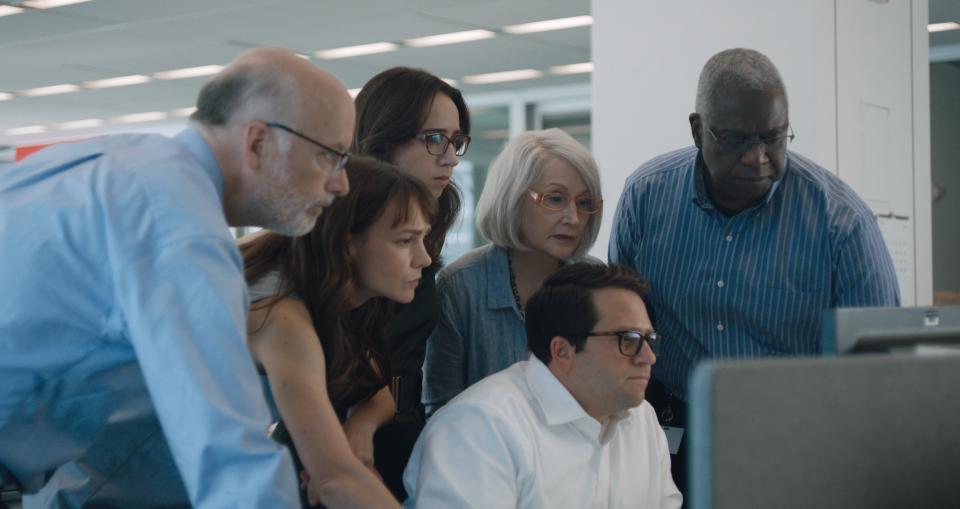
Universal Pictures
That interest in the truth and that desire to chronicle what really happened drove Kantor and Twohey, just like it drove Schrader.
Consider one of the film’s key final sequences: the moment that the story is published. Kazan and Mulligan hover behind supporting actor Davram Stiefler (playing NYT editor Rory Tolan), flanked by Frank Wood (as NYT editor Matt Purdy), Patricia Clarkson (as their boss Rebecca Corbett), and Andre Braugher (as executive editor Dean Baquet). They scan the story one more time. Wood reads slower, more carefully than the rest. They finally agree. Stiefler hits “publish.” They wait.
The emotion of that scene, that sense of terror and release, fits in perfectly with the momentum of the entire film. It’s genuinely thrilling, but Schrader took it a step further, looking for the details that made it not just feel real but made it feel true.
“The last day when they published, there is photographic material, so we knew what they were wearing, we knew how the group was positioned,” she said. “There is this picture, and we have it. It’s almost iconic. And every character, we positioned them just like they were, we dressed them just like they were. It felt like a very special moment, this concentration, [as they] all looked at these words as a team. And then someone took a picture.”
Someone knew how important that moment was, sensing just how much was about to change — and the importance of documenting it, all the better to remember.
Universal Pictures releases “She Said” in theaters on Friday, November 18.
Best of IndieWire
Sign up for Indiewire's Newsletter. For the latest news, follow us on Facebook, Twitter, and Instagram.


